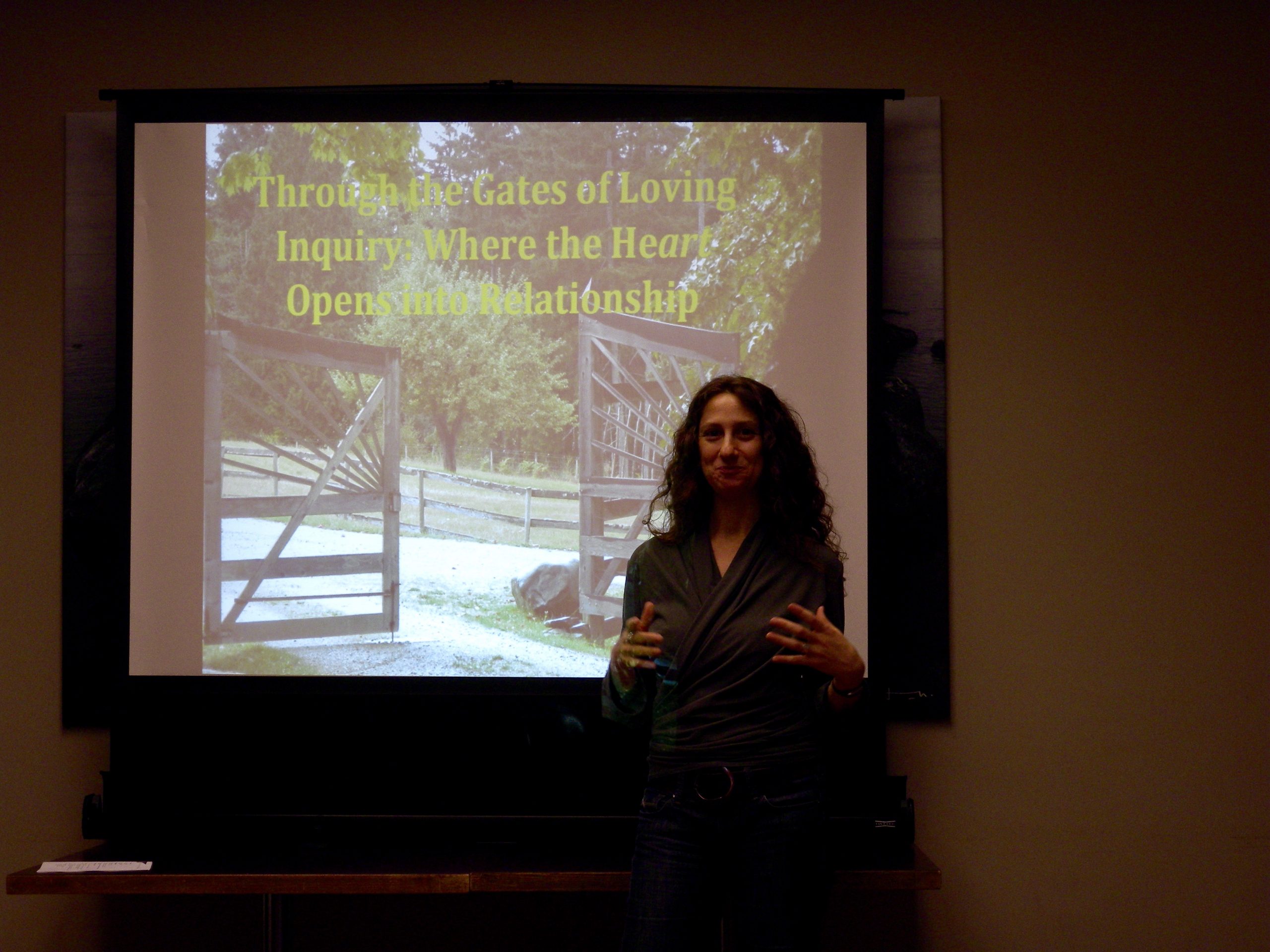I can hardly believe that it’s done! I am now officially Dr. Ahava Shira or Ahava Shira, PhD.
In preparation for my defense, I sat a 7-day silent meditation retreat at Stowel Lake Farm here on Salt Spring with teacher Adrianne Ross. The silence was gorgeous, the spring blooms on the farm intoxicating, and the deep physical and mental relaxation, exquisite. Don’t get me wrong; meditating is effortful work. It takes a lot of courage, patience and endurance to sit day after day with one’s mind and body. No distractions, one has to become comfortable with what is often uncomfortable. Indeed this is a significant aspect of a vipassana retreat.
We sit and walk, eat and chant, all the while watching our breath, our mind-states, our feelings, and our physical sensations. The aim is to be fully present with what is happening moment to moment, even, or especially, when that is difficult, or unpleasant.
For example, when I am sitting in the meditation hall and there is a lot of pain, the practice is to focus on relaxing the body, softening into the sensations, and/ or focusing on another part of the body that is more comfortable. This is not about asceticism. It is about training the mind. The Buddha taught that life is 50% pleasant and 50% unpleasant. We can relieve much of our suffering by learning to be with the unpleasant in a way that is soft and open and relaxed. When we do that the unpleasant usually softens and becomes less difficult. When we constantly try to make things “pleasant” i.e. comfortable and gratifying, we suffer because we are often resisting what is actually happening, as well as wanting something else.
It is this incessant wanting/craving/clinging that the Buddha said causes suffering in the world. Likewise, when we resist and struggle with the way things are, we are creating more suffering for ourselves, and for the world.
So this is why we sit and practice being with what is, whether it is pleasant or unpleasant. We also look at what is neutral, as oftentimes we are simply not able to be with the emptiness and thus interpret it as boredom. Then we create drama and excessive activity in our lives to take up the space that might otherwise be a moment of open and relaxed attention.
So you may be wondering why I would want to submit myself to such a rigorous exercise a week before my BIG DEFENSE DAY. Well, I went into the retreat with a lot of anxiety and unnecessary worry, not only about the defense but about what will happen afterwards, how I will make a living, what work I will do etc… However through the extreme concentration in the retreat I was able to let go of a lot of that worry and the fear that accompanies it. The meditation practice has a purifying effect. I renounced all kinds of superfluous thoughts and anxieties as I practiced staying in the present moment. That’s quite the liberation!
As was the defense. Everything went smoothly. I answered the questions well, intuitively, and with all of my heart. The external examiner’s report was phenomenal. She loved my thesis and even called it “cutting edge”.
That week the magnolias were out all over Vancouver and I loooooove magnolias, especially when they are in full bloom. They are so alive, so wide open, petals haphazardly splayed.
And now I am done. And I love that too. My shoulders are relaxed, my heart is full of joy for the journey completed. I doubted for a long time whether I could pull it off, the arts-based thesis and the phd defense. All of it was so new to me, so unknown and daunting. But with the support of the people in my life, my partner, dearest friends and the mentorship of professors and some more dear friends I succeeded. It’s a big boost to my confidence, and a clue to what’s possible in my life as it unfolds.
As I named in the defense, I have walked around with anxiety and doubt for all of my adult life. So there was something about really committing to the phd and seeing it all the way through that was important.I could not have made it through without my practice, both that of vipassana and of Loving Inquiry, the creative and contemplative practice I created and documented in my thesis. Perhaps that’s what made it so special and so vital a journey.
I wrote a beautiful manuscript in poetry, narrative and photography about what matters the most to me: how I engage in loving, compassionate, open-hearted relationships with myself, other people and with the natural world. To read it, click here…




 `
`